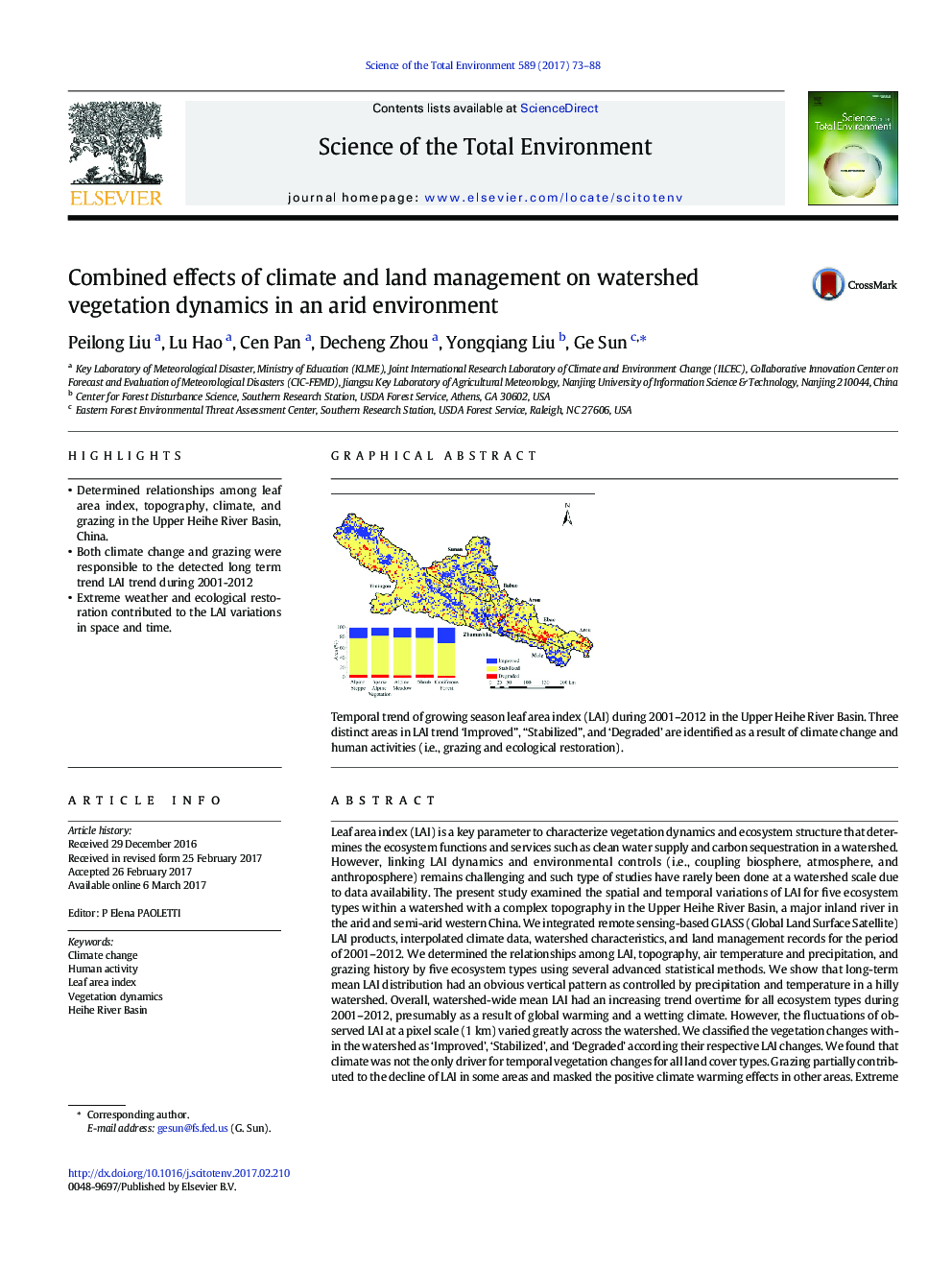| کد مقاله | کد نشریه | سال انتشار | مقاله انگلیسی | نسخه تمام متن |
|---|---|---|---|---|
| 5751531 | 1619705 | 2017 | 16 صفحه PDF | دانلود رایگان |
- Determined relationships among leaf area index, topography, climate, and grazing in the Upper Heihe River Basin, China.
- Both climate change and grazing were responsible to the detected long term trend LAI trend during 2001-2012
- Extreme weather and ecological restoration contributed to the LAI variations in space and time.
Leaf area index (LAI) is a key parameter to characterize vegetation dynamics and ecosystem structure that determines the ecosystem functions and services such as clean water supply and carbon sequestration in a watershed. However, linking LAI dynamics and environmental controls (i.e., coupling biosphere, atmosphere, and anthroposphere) remains challenging and such type of studies have rarely been done at a watershed scale due to data availability. The present study examined the spatial and temporal variations of LAI for five ecosystem types within a watershed with a complex topography in the Upper Heihe River Basin, a major inland river in the arid and semi-arid western China. We integrated remote sensing-based GLASS (Global Land Surface Satellite) LAI products, interpolated climate data, watershed characteristics, and land management records for the period of 2001-2012. We determined the relationships among LAI, topography, air temperature and precipitation, and grazing history by five ecosystem types using several advanced statistical methods. We show that long-term mean LAI distribution had an obvious vertical pattern as controlled by precipitation and temperature in a hilly watershed. Overall, watershed-wide mean LAI had an increasing trend overtime for all ecosystem types during 2001-2012, presumably as a result of global warming and a wetting climate. However, the fluctuations of observed LAI at a pixel scale (1Â km) varied greatly across the watershed. We classified the vegetation changes within the watershed as 'Improved', 'Stabilized', and 'Degraded' according their respective LAI changes. We found that climate was not the only driver for temporal vegetation changes for all land cover types. Grazing partially contributed to the decline of LAI in some areas and masked the positive climate warming effects in other areas. Extreme weathers such as cold spells and droughts could substantially affect inter-annual variability of LAI dynamics. We concluded that temporal and spatial LAI dynamics were rather complex and were affected by both climate variations and human disturbances in the study basin. Future monitoring studies should focus on the functional interactions among vegetation dynamics, climate variations, land management, and human disturbances.
Temporal trend of growing season leaf area index (LAI) during 2001-2012 in the Upper Heihe River Basin. Three distinct areas in LAI trend 'Improved”, “Stabilized”, and 'Degraded' are identified as a result of climate change and human activities (i.e., grazing and ecological restoration).264
Journal: Science of The Total Environment - Volume 589, 1 July 2017, Pages 73-88
